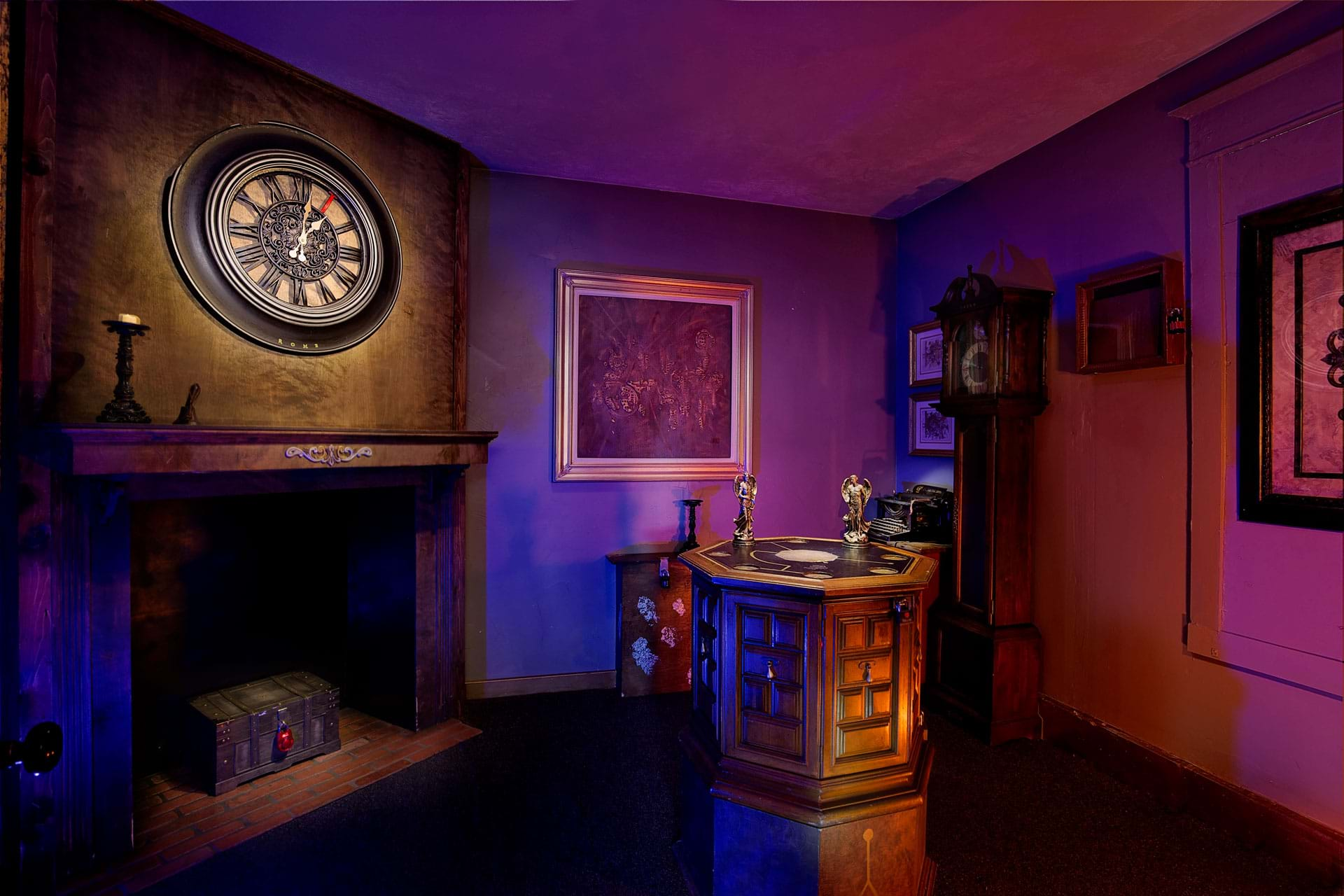Fun and Testing Escape Room-- Strategy Your Following Adventure
Wiki Article
Group Methods: Exactly How to Work together Successfully in an Escape Room
Navigating the complexities of a retreat area demands more than plain interest; it calls for a well-coordinated strategy grounded in clear interaction, tactical duty jobs, and adept time monitoring. Groups have to actively pay attention per member's understandings, designate functions that line up with individual toughness, and keep normal check-ins to make certain emphasis and prevent redundancy. By cultivating a setting that values cohesion and adaptability, groups can considerably increase their effectiveness and success prices. The subtleties of these approaches can transform the experience, however exactly how precisely can they be executed to optimize the possibility for success?Establish Clear Communication

To help with clear interaction, it is vital to mark a central factor of get in touch with for info circulation. This role includes summarizing searchings for and recommended techniques to make certain everybody remains on the exact same web page. Furthermore, taking on an organized method to conversations can avoid chaotic exchanges. Short, concentrated updates from each team participant can keep the team educated without overwhelming them with details - best escape room.

Designate Duties Strategically
While clear interaction sets the structure for effective synergy, designating roles tactically makes certain that each staff member's strengths are used effectively. In an escape area scenario, the time-sensitive and intricate nature of challenges necessitates an efficient approach to job delegation. By determining and leveraging private competencies, groups can maximize their problem-solving abilities and enhance overall efficiency.Somebody with a keen eye for detail might excel in discovering hidden objects, while a logical thinker could be better fit to addressing problems. This duty typically requires strong business and social abilities.
Second, make sure that functions are versatile and versatile. As new obstacles arise, the group must be able to pivot, reallocating tasks as required. This adaptability aids preserve momentum and avoids traffic jams that could take place as a result of inflexible function jobs.
Inevitably, a critical strategy to function job not just makes the most of the strengths of each team participant but also cultivates a cohesive setting, driving the group towards an effective escape.
Use Diverse Skills
Recognizing and using the varied abilities within your team can substantially elevate your efficiency in a getaway space. Each staff member brings special strengths to the table, and effectively leveraging these capabilities can quicken analytic and boost total efficiency. As an example, a staff member with solid analytical skills might excel at analyzing complex codes or patterns, while an official site additional with keen empirical capacities may swiftly detect concealed hints that may overlook.
Urge group participants to voice their insights and concepts without delay, ensuring that all prospective options are thought about. Furthermore, appointing tasks that straighten with each participant's staminas can prevent bottlenecks and guarantee that progress is continuous.
In addition, her latest blog variety in skills often converts to variety in assuming styles, which is invaluable in a retreat space setup. While some challenges might need logical reasoning and precision, others might profit from imaginative and association of ideas. By recognizing and leveraging this variety, groups can address a broader series of challenges better, thus boosting their possibilities of an effective getaway.
Manage Time Efficiently

First, designate first minutes for a quick survey of the area. Determine noticeable problems and separate jobs based on staff member' staminas, making sure that nobody is idle. Establish inner time checkpoints to examine development periodically; as an example, objective to have half the puzzles solved by the mid-point of the game. This method can help keep the group focused and prevent time from escaping undetected.
Furthermore, stay clear of tunnel vision. If a puzzle is taking as well long, rotate team participants or move on to an additional difficulty, returning later with fresh point of views. Interaction is extremely important-- keep everybody upgraded on resolved problems and staying jobs to avoid repetitive efforts.
Finally, utilize any tips or clues moderately but strategically - best escape room. Knowing when to request for help can conserve useful time. By adhering to these time monitoring principles, groups can substantially enhance their opportunities of a successful and pleasurable getaway space experience
Debrief and Reflect
Representation is a necessary aspect of team growth and improvement in the context of retreat rooms. When the obstacle site link is completed, whether effectively or not, it is vital for the group to participate in a structured debriefing session. This procedure allows team participants to assess their performance, determine strengths, and identify locations for renovation.Begin the debrief by discussing what worked out. Highlight specific instances of efficient interaction, analytic, and cooperation. Acknowledging these favorable actions reinforces them and encourages their repetition in future obstacles.
Next, address the challenges came across. Go over moments of confusion, miscommunication, or inefficient methods. Urge an open and positive dialogue where staff member can share their point of views without concern of objection. This promotes a society of continuous renovation and learning.
Conclusion
In verdict, successful collaboration in a getaway space is based upon clear communication, critical role jobs, the reliable application of diverse abilities, and competent time monitoring. By creating a natural and adaptive group environment, the probability of successfully addressing puzzles and accomplishing the objective of getting away the space is substantially boosted.Report this wiki page